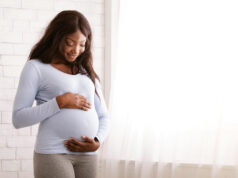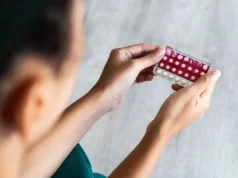The perineum is the region between the human genital (vagina) and the passage (anus). It is very possible for the perineum to have a tear during childbirth but if you do not undergo a tear during delivery, there is a high tendency that the perineal region will be swollen which may cause discomfort.
Postpartum Perineal pain is a fact of life which most of the women must undergo during delivery process. This perineum is as a result of the pain you feel during delivery which involve the genital area.
The genital area can be the vulva and vagina and possible extension to the cervix of the uterus. The uterus is the hollow muscular organ located in female pelvis between the bladder and the rectum.
Most women except the pain to end immediately after delivery but unfortunately, the pain can last in the area for several weeks depending on the delivery method.
The postpartum perineal Pain can be as a result from tears at delivery to make the vaginal stretch, but which are subsequently repaired. The deeper the cut, the longer it takes to heal and to stop feeling the pain.
Causes of Perineal Tear
There are some risk factors for the perineal tears during delivery that can lead to perineal pain. They include.
- Fetal Macrosomia: – Fatal Macrosomia is used to describe the newborn who is larger than average. When a baby is lager or more than average, the obstetrician will likely give the mother a tear the baby to pass out freely.
- Narrow pelvis: A pelvis is the larger compound bone structure at the base of the spine that supports the legs. When your pelvis is not wide enough, your doctor may recommend cesarean section(cs) because of protracted labour (Inability to proceed childbirth even in labour).
- Congenital anomalies (Hydrocephalus): This is known as defects during or after birth. Hydrocephalus is buildup of excess cerebrospinal fluid (csf) in the brain at birth. Hydrocephalus cause the baby to have a big head hence difficulty passing the perineum during a delivery. Babies can be born with hydrocephalus while infants and children can develop it. Due to the large head, the doctor may give a tear to the mother to enable the baby pass freely.
- Gestational diabetes with attendant rush of macrosomics. This is when the baby is exposed to a high level of glucose in the utero (Womb), which is converter to fat, making the baby bigger than normal.
- When the shoulder of your baby is stuck behind your pelvic bone can cause perineum tear.
- If your baby has an abnormal heart rate during delivery, the doctor can give a year for quick delivery.
- Abnormal Fetal Presentation: Normally, a fetus position is rearward with the face and body angled to one side while the presentation is headfirst. It can only be abnormal if the fetus position is facing forward and the presentation is the face, brow, breech and shoulder. Abnormal fetal presentation is a risk factor that ca cause perineal tears.
Symptoms of perineal pain
There are some symptoms which will trigger you to see your doctor immediately after childbirth. Symptoms may include.
- Constant dull aching pain: During delivery, there will be a constant aching pain which may worsen on bearing down. Bearing down means the increase of pressure within the abdomen by contracting the abdominal muscles in order to push out the baby.
- Pain during intercourse (dyspareunia): This can be a cause of the vaginal dryness from childbirth. You are advised not to have sex immediately after childbirth but not everyone heed to advise.
- Vaginal discharge with a strong or offensive smell.
- Pain in the process of urinating.
- Pain on your legs with swelling or redness.
- Dizziness or fainting.
- Breast becomes too soft to touch.
- Vomiting constantly.
- Pain in the perineum, pelvis or lower abdomen
- If you notice heavy virginal bleeding that you have to change the pad every hour, then you should visit your doctor.
Treatments of postpartum perineal pain
- You can use an analgesic (pain medication) like Acetaminophen or Ibuprofen, it helps reduces pain without inducing unconscious. Aspirin should be avoided as a breastfeeding mother.
- Avoid triggers like sex soon after perineal repair.
- Ensure to always spray warm water on the painful area to make sure the area is always clean.
- If the area is swollen, you can apply a crushed ice with an inbuilt cold pack. It can be applied after 24hours of delivery.
- Avoid constant touching on the affected area with your bare hands.
- Try to avoid any activities that will strain you. Also do not stand or sit for a long period of time.
- Always try to expose the affected area to air to cause lesser pain and to heal quickly.
- Eat food that contains fiber like fruits, vegetable and also drink plenty of water to avoid strong stool.
- Use a dough but shaped pillow to sit. It gives comfort while you sit.
- Avoid sexual intercourse until you do not feel perineal pain.
- Try Kegel exercise. The Kegel exercise is when you relax and tighten the muscles that control urine flow.
- Try to avoid tight underwear’s.
- Avoid using tampons after delivery. Tampons can cause infection.
Conclusion
Conclusively, note that as a woman, perineal pain is what you will undergo during or after childbirth but for a short period of time. Perineal pain will go after a short period of time which is depending on the method of delivery, but a child will stay with you forever.
The excitement of getting a child comes along with pains during delivery but this is the pain which a mother should endure to hold that beautiful baby because there is this Joy that a child brings that is beyond any pain to a mother.












